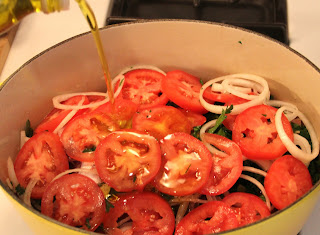Portuguese Homemade White Cheese
Ingredients:
- 12 cups/3 quarts of Whole Milk
- 1 Teaspoon Salt
- 1 Teaspoon of Rennet of 2 tablets
- Round forms
Fill a 3 quart pot or larger with 12 cups of whole milk. Set flame on low. You do not want this to boil. You only want the milk to get to a lukewarm temperature. The way I was taught to test is old school. Stick your clean fingers in to see if it's getting warm.
Add 1 teaspoon of rennet or your tablets to your milk before it gets warm and mix slowly once. Also add 1 teaspoon of salt.
These are the forms we use. Made from pvc pipes w tiny holes drilled into them. They are 4 inches in diameter. I like to use the smaller ones which are 2.5 inches high. It's quicker to drain water from the cheese.
Once you have tested the milk and it's lukewarm. Take it off the heat!
The milk will begin to solidify and you will start to see water come to sides of pot.
I make a cross with a knife in the center to let more water come up to surface.
Let sit for 5 minutes.
Next bring your pot next to sink and spoon out as much water as possible.
Now with a steel mesh skimmer or large spoon is fine, spoon out cheese over a mesh strainer that's over a large bowl to catch the water.
Not everyone does this extra step. If you like your cheese more wet, skip this step. It's up to you.
Now set the forms on a flat dish near the sink. Spoon out cheese from the strainer into the forms. I press a piece of paper towel onto the water coming out the bottom of forms and let it hang over the sink to make a sort of drain.
Also put a paper towel on top of cheese.
Water will continue to seep out of holes. From time to time strain the water with a tablespoon. Let sit for at least 12 hours. You should have fresh cheese by the next morning for breakfast.
Spread on bread and enjoy with café or chá.
Hope you try to make fresh cheese yourself at home. It's very simple :)































